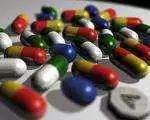Celiac.com 12/07/2009 - Collagenous sprue is associated with high morbidity, but the etiology of this condition is poorly understood. There is little data concerning the pathological and clinical manifestations of patients with collagenous sprue. The research team set out shed some light on the etiology, disease manifestations and outcomes of collagenous sprue.
A team of researchers recently undertook a clinico-pathological study of 19 patients with collagenous sprue and found that the condition does not always end badly for the patient.
Celiac.com Sponsor (A12):
The research team was made up of Efsevia Vakiani, Carolina Arguelles-Grande, Mahesh M Mansukhani, Suzanne K Lewis, Heidrun Rotterdam, Peter H Green and Govind Bhagat. They are associated with either the Department of Pathology at New York's Memorial Sloan-Kettering Cancer Center, or with Columbia University's Department of Medicine or of Pathology.
The team searched their departmental database covering the periods from 1999–2008 to identify cases of collagenous sprue and to gather clinical and lab data.
The team evaluated small bowel histology, including thickness of sub-epithelial collagen, intra-epithelial lymphocyte phenotype and results of T-cell clonality assays.
The found nineteen patients (15 women, 4 men, age 22–80 years, mean 57 years). Seventeen (89%) suffered from celiac disease and two from unclassified sprue. 9 of 17 (53%) celiac disease patients had refractory disease; 5 of 15 (33%) presented atypically without diarrhea, including 2 of 6 (33%) with active (untreated) celiac disease, and 3 of 9 (33%) with refractory celiac disease.
They found autoimmune disorders in 12 of 19 (63%) patients and microscopic colitis (n¼7), lymphocytic gastritis (n¼2) or collagenous gastritis (n¼2) in nine patients.
Thickness of subepithelial collagen increase varied from mild (n¼6), moderate (n¼10), or marked (n¼3), and
villous atrophy from total (n¼13) to subtotal (n¼6).
In no case did they find phenotypically aberrant intraepithelial lymphocytes. The only patient with refractory celiac disease type II showed a dominant T-cell clone with polymerase chain reaction analysis. 7 of 11 (64%) patients showed histological improvement.
Overall, 8 of 19 (42%) responded favorably to a gluten-free diet, including 2 of 9 (22%) with refractory celiac disease. 10 of the 19 patients responded to immuno-modulatory therapy, including 6 of 9 (67%) with refractory celiac disease. Only one patient died from the effects of refractory celiac disease. No patient developed lymphoma. The vast majority of patients with collagenous sprue did have celiac disease.
Even though numerous patients required immuno-modulatory therapy to control symptoms, many responded to gluten-free diet alone. The researchers conclude that most collagenous sprue patients have relatively good clinical outcomes.
Source:
Open Original Shared Link




.webp.99896af56bb1803946dfc6fde9ea63f3.webp)




Recommended Comments